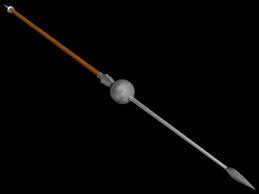Key Point: Falarica is a Roman projectile weapon, characterized by its javelin or dart design. It was employed in ancient warfare, particularly by Roman soldiers, as a throwing weapon with a sharp point for both short and medium-range combat.
Today we will be discussing the falarica. More importantly how the falarica was used as a naval weapon during the times of ancient Rome. So, by the time you finish this article, you will know precisely what a falarica is, how it was used, and if it was even effective as a naval weapon.
But before we begin, I will give you the key takeaway defining what a falarica is and how it was used:
The falarica was a throwing spear used by the Roman navy. It was shorter than a typical spear but had a heavier head and was designed for great force and accuracy. The weapon was particularly useful against enemy archers and other ranged attackers on enemy ships. It was also used in land battles and was a favored weapon of the Roman auxiliary troops.
That was the key takeaway. Not let’s proceed to discuss the falarica in a little more detail. Starting with its history and origin.
The Origin And History Of The Falarica
Faalrica is believed to have originated in the Iberian Peninsula. Which was then part of the Roman Empire. Rome apparently adopted it during the late Republic era.
It was developed as a replacement for the heavier and longer pila, a common Roman spear used for both throwing and thrusting. The falarica had a shorter shaft and a heavier iron head. Which made it easier to throw with great force and accuracy.
It was especially effective against enemy archers and other ranged attackers on enemy ships during naval battles.
Not only was the falarica used in naval warfare, but also in land battles. It was actually the favorite of the Roman auxiliary troops, who were skilled in using it to deadly effect. These troops were often recruited from allied states and were used in frontline combat. Although the falarica was eventually replaced by other throwing weapons, such as the pilum and the plumbata, it remained an important weapon in the Roman military for centuries.
Its design and construction actually influenced other weapons, such as the francisca. Which was a throwing axe used by the Franks in the medieval period.
Now, before we discuss how it was used let’s go through the size of the average falarica and how it looked.
Its Dimensions

The falarica was 1.4 to 1.8 meters (4.5 to 6 feet) long. With the shaft itself taking up 1.2 to 1.5 meters (4 to 5 feet) of that length. Its head was 20 to 30 centimeters (8 to 12 inches) long. Its heavy iron head had a distinct leaf shape that was effective for both thrusting and throwing. The head was attached to the shaft with a socket, which added extra strength and stability to the weapon.
That is the dimension part. Now, let’s see how the Romans used the falarica in naval battles.
How The Falarica Was Used?
During naval engagements, Roman sailors would hurl their falarica at enemy ships with great force. The heavy iron head of the weapon was designed to penetrate armor and wooden hulls. Which obviously caused damage and confusion among the enemy crew. The falarica was primarily used to target other long-range units such as archers that operated on the deck of the opposing ship.
In addition to throwing the falarica, Roman sailors could also use the weapon for thrusting in close combat. The short shaft of the falarica made it ideal for use in tight quarters, such as when boarding an enemy ship. The heavy iron head could easily pierce through armor and inflict serious injury on the enemy crew.
As you can see the falarica was primarily used as a ranged weapon that the Romans hurled at their enemy from their triremes.
In Conclusion
Thank you for taking the time to read my article on this versatile Roman naval weapon. I hope you learned a thing or two.
Take care!
Sources: